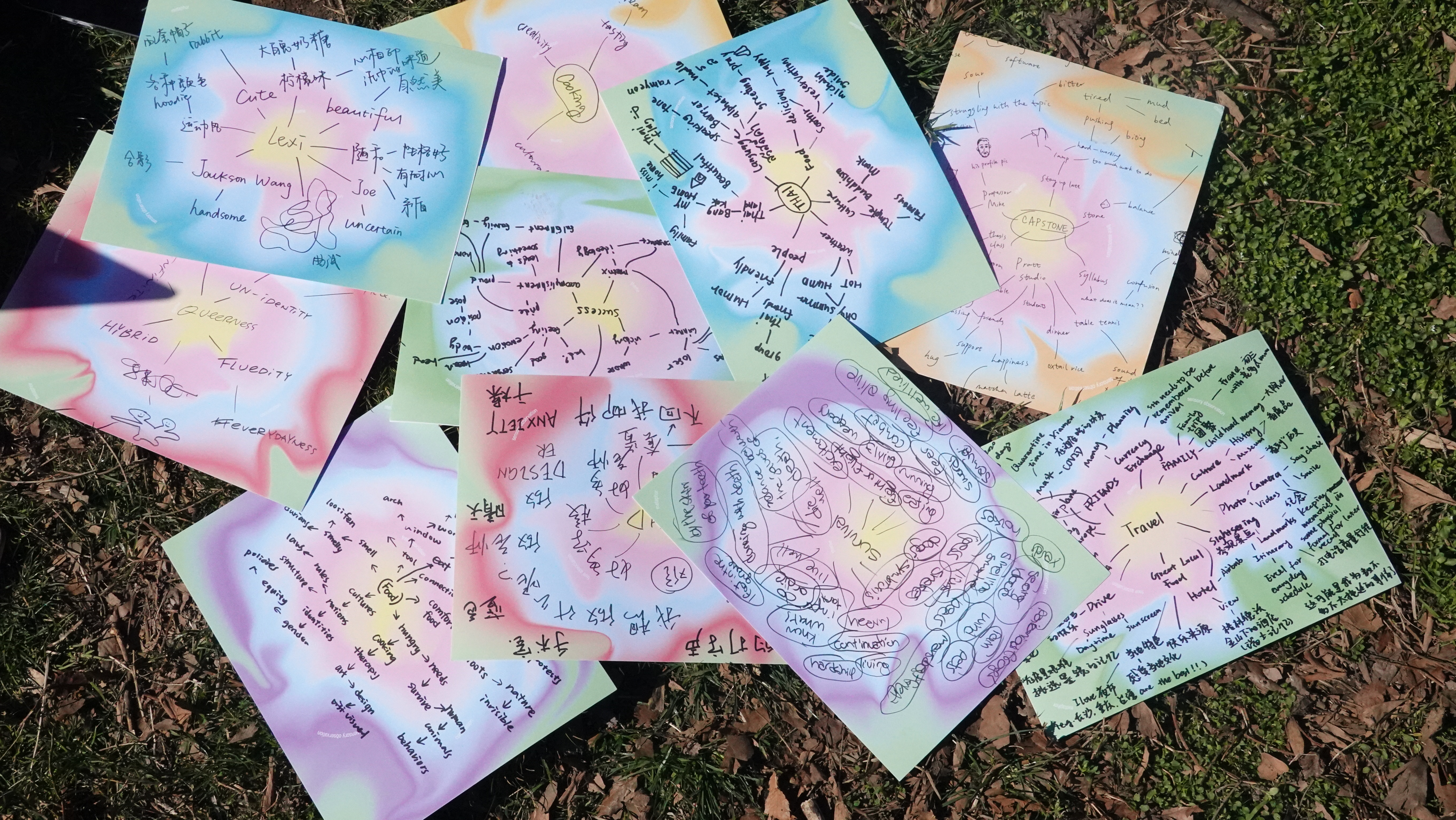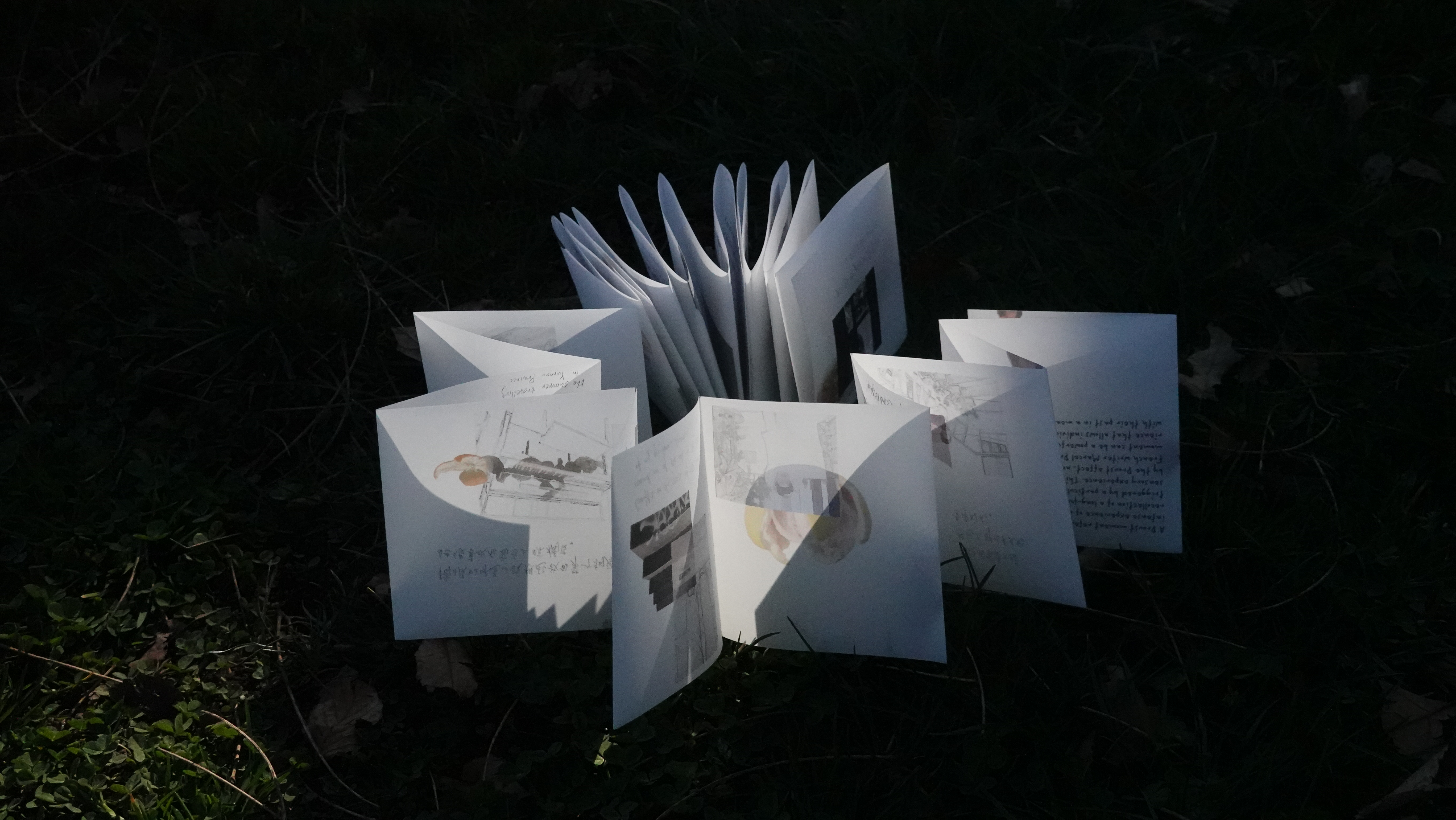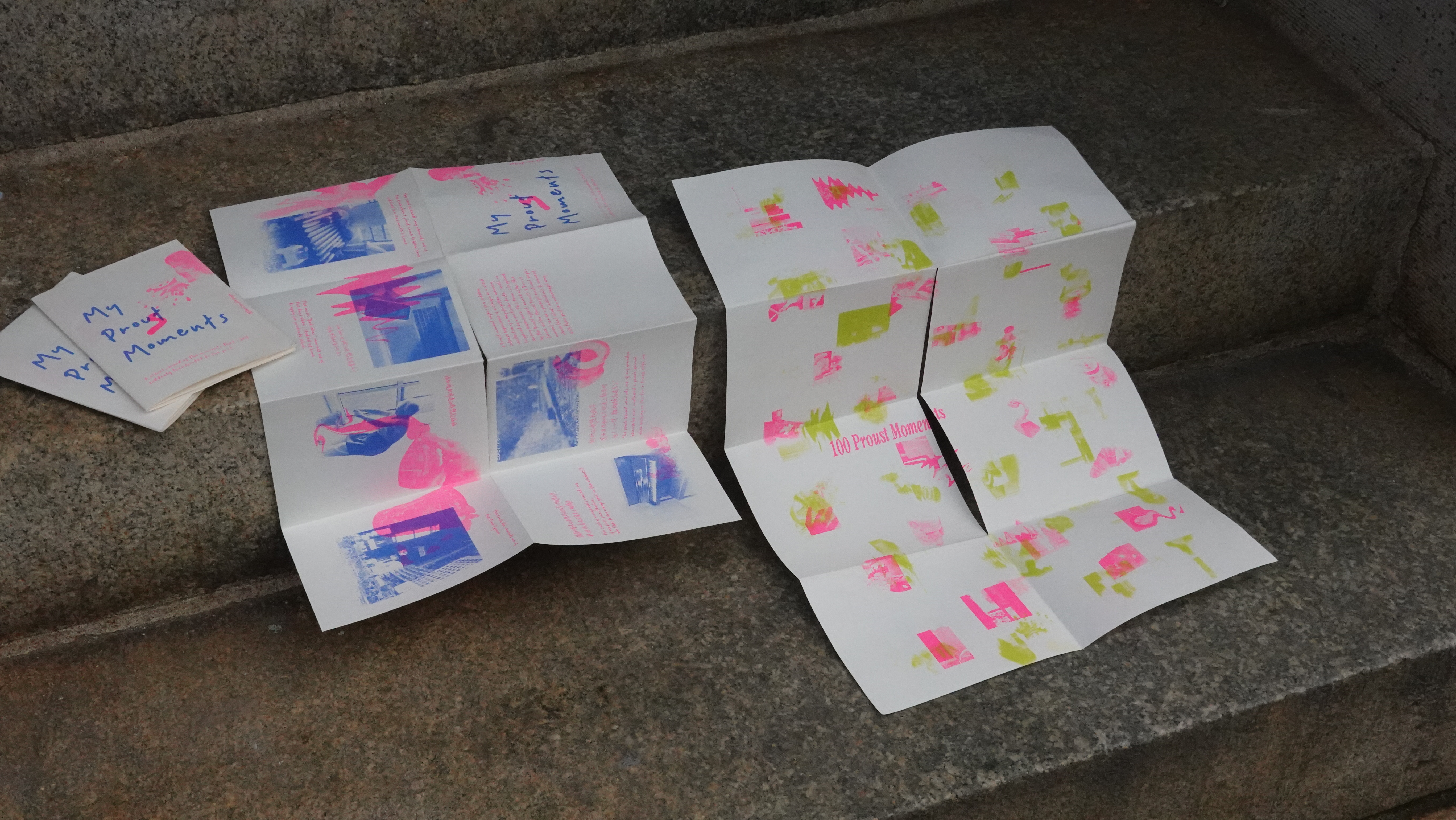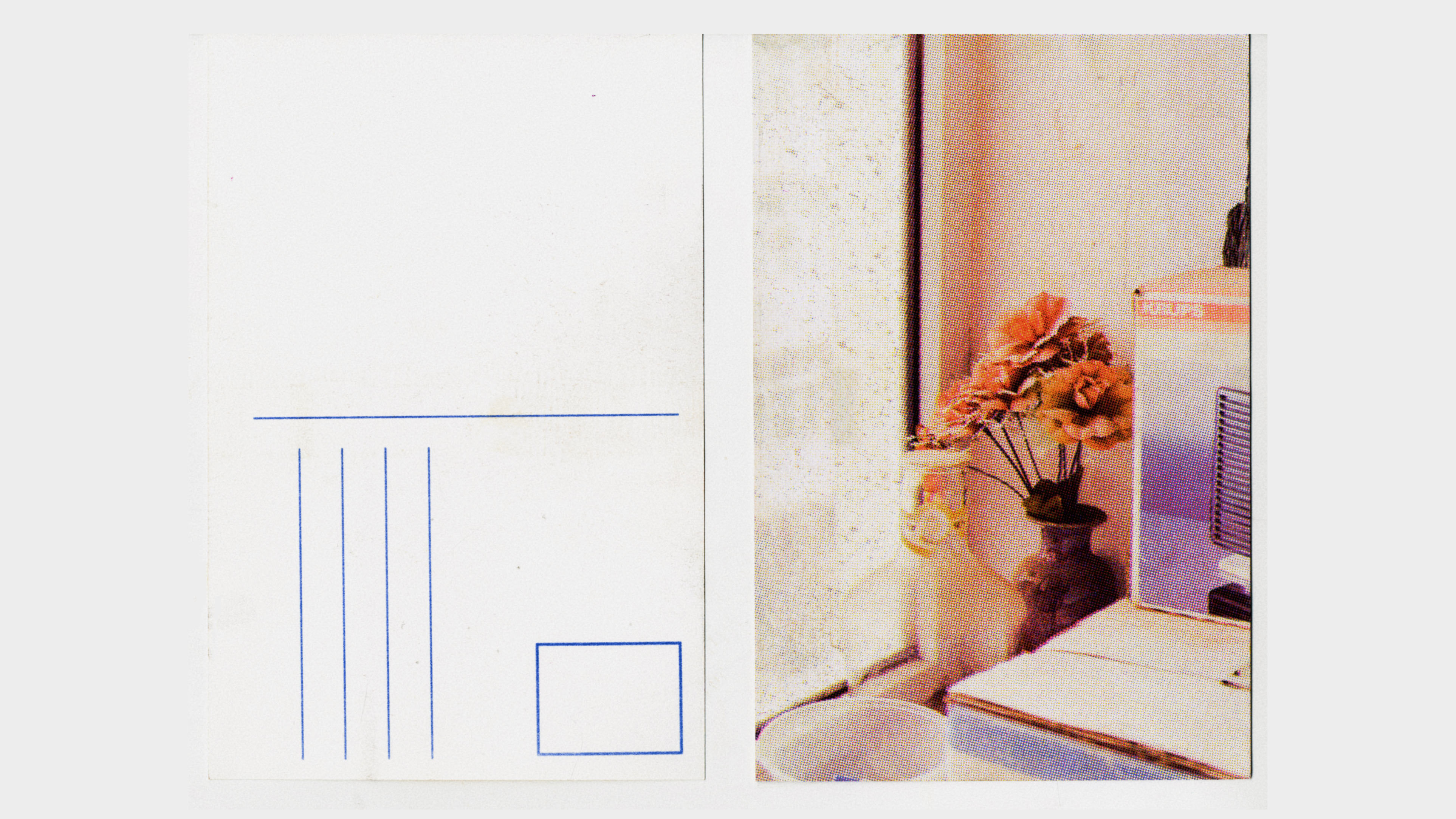Stream-of-Consciousness Design
Zixuan Xu
While our individual experiences of consciousness are a unified whole, the content of consciousness is constantly changing and fluid. Stream-of-consciousness is a literary and film technique that dissects the inner world of characters, breaking traditional narrative boundaries. However, there’s no formalized design method as such. I argue that stream-of-consciousness is a distinct and apropos approach for visual communication design in our contemporary era. In my thesis, I explored what that might look like, and how time and space can be interrupted and reorganized in graphic design. I also proposed a design methodology that uses free association of ideas to convey messages that resonate with the audience.

Stream-of-Consciousness Design Methodology
To explore how design can evoke viewers' aesthetic emotions, I proposed a new approach called stream-of-consciousness design. This methodology invites an audience to see the fringe to expand their way of thinking, creating a network of associations that resonate with the audience.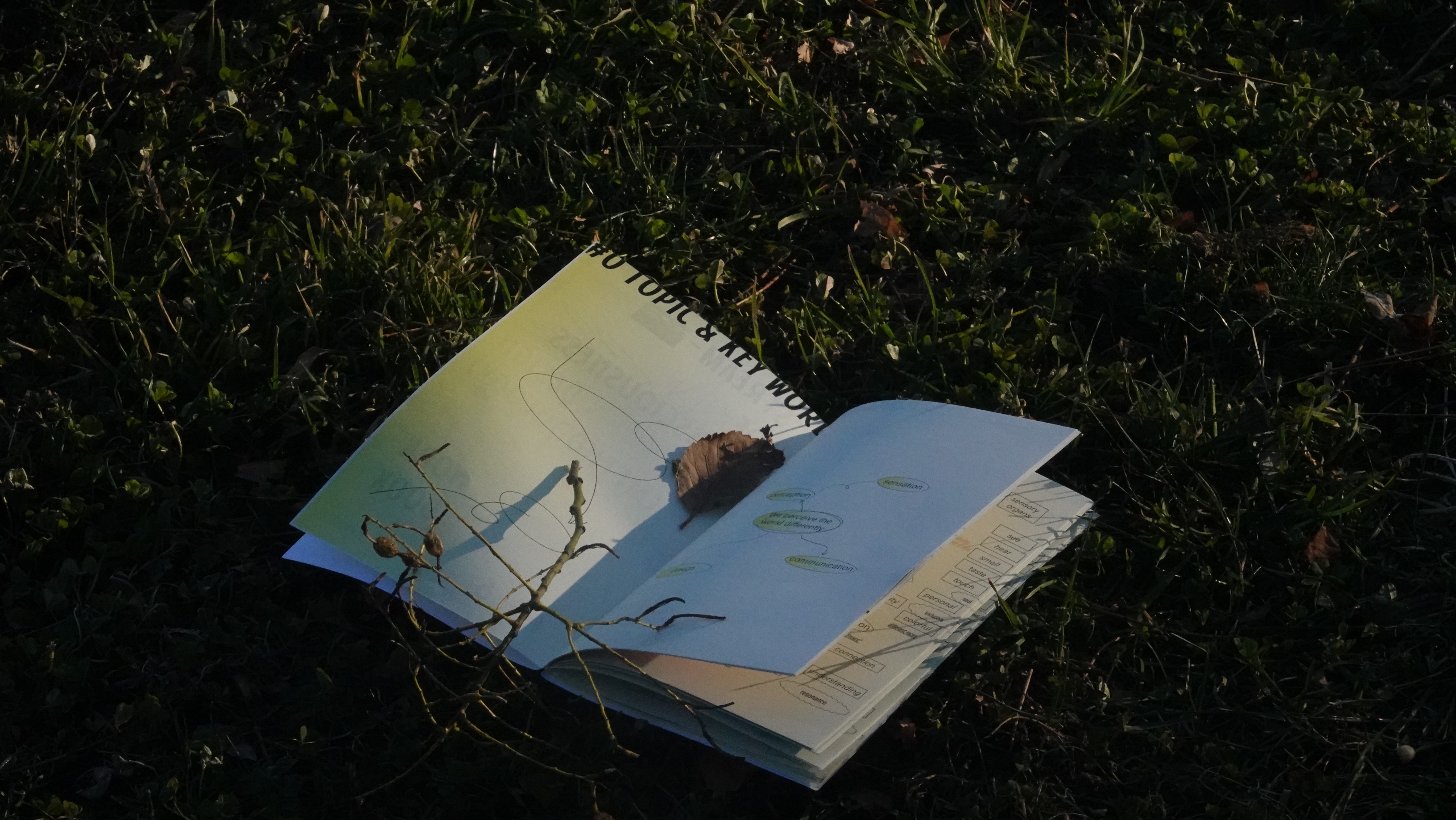
Stream-of-Consciousness Design Workbook
In order to guide people to understand and use stream-of-consciousness methodology to create design, I designed a workbook including all the above-mentioned steps of this methodology and also an example in it.
On the left side of each spread, I described what each step means and how it works; on the right side, I showed an example of association starting from a specific topic We perceive the world differently, from which the reader can get a better understanding of how this approach works. After introducing the full process of the association, I also displayed how an association map is translated step by step into a visualized poster.

Posters Perception
To explore the application of stream of consciousness in visual forms, I created two posters around the theme of perception. I threw all the associations I had in my mind into the poster without considering the final presentation or whether the audience could understand.Mindmap Cards
To examine if this workbook works and people’s feedback on using it, I designed a set of mindmap cards to let people participate and interact with. I used the same color code with the workbook to provide a framework for the audience to associateMy 100 Proust Moments
The Proust effect, “an involuntary, sensory-induced, vivid and emotional reliving of events from the past”. We have all experienced the feeling of being suddenly transported back to our pasts. Triggered by a smell, a taste, a sound, or a physical sensation, we relive intense and emotional memories. I also notice those moments from time to time. For example, the smell of laundry detergent reminded me of my grandmother, the taste of hotpot reminded me of life back in undergraduate school, and the sound of people talking on the subway reminded me of high school class break… I recorded 100 such moments and visualized them.My Proust Moments Zine
I selected 30 of them and made an accordion book. The continuous binding method of the accordion book brings a sense of flow, just like our memories and stream of consciousness. I printed them on translucent paper and wrote down specific memory details on the back. The viewer can see the pictures from both the front and back, and the text on the back can be seen in better light. This blurriness and uncertainty is also a feeling memories often evoke.
